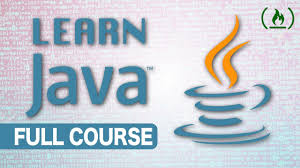 Get SEO-Optimized Articles – Written for Humans, Loved by Google!
Get SEO-Optimized Articles – Written for Humans, Loved by Google!
The Basic Syntax and Structure of a Java Program: A Comprehensive Guide
Written by nikita » Updated on: November 19th, 2024

introduction
Java, one of the most popular programming languages in the world, is widely used for various software development projects. Whether you are a seasoned developer or just starting your journey in the world of programming, understanding the basic syntax and structure of a Java program is essential. In this article, we will delve into the fundamental elements of a Java program, exploring the building blocks that make it a versatile and powerful language. Whether you're interested in pursuing a career in software development or simply exploring Java as a hobby, this article will provide you with a solid foundation to get started. So, let's dive into the world of Java Development!
Installing the Java Development Kit (JDK)
Before you start coding in Java, you need to set up your development environment by installing the Java Development Kit (JDK). The JDK includes the Java Runtime Environment (JRE) and tools necessary for Java development. You can download the JDK from the official Oracle website or choose the open-source version, OpenJDK.
Creating a Java Source File
In Java, a program is a collection of one or more classes. A class is a blueprint for creating objects that share similar properties and behaviors. To begin, open a text editor or use an Integrated Development Environment (IDE) such as Eclipse, IntelliJ IDEA, or NetBeans.
The Basic Structure of a Java Program
A basic Java program comprises the following parts:
java
Copy code
// Import statements (optional)
// Class declaration
public class MyClass {
// Main method (entry point of the program)
public static void main(String[] args) {
// Statements to be executed
}
// Other methods (optional)
}
Comments
Comments are an essential part of code readability and understanding. In Java, you can use two types of comments: single-line comments and multi-line comments.
Single-line comment:
java
Copy code
// This is a single-line comment
Multi-line comment:
java
Copy code
/*
This is a
multi-line comment
*/
Package Declaration (Optional)
In larger projects, developers often organize classes into packages. A package is a group of related classes. The package declaration appears at the top of the Java file.
java
Copy code
package com.example.myproject;
Import Statements (Optional)
If your program uses classes from other packages, you need to import them using import statements.
java
Copy code
import java.util.Scanner;
Class Declaration
The class keyword is used to declare a class. The name of the class should be in CamelCase and start with a capital letter.
java
Copy code
public class MyClass {
// Class body
}
Main Method
Every Java program must have a main method. It serves as the entry point for the program and is called when the program is executed.
java
Copy code
public static void main(String[] args) {
// Statements to be executed
}
Statements and Expressions
Java programs consist of statements and expressions. A statement is a complete unit of execution, while an expression is a combination of variables, operators, and method calls that produce a value.
java
Copy code
int x = 5; // Statement
int sum = x + 10; // Expression
Variables and Data Types
Variables are used to store data in a Java program. Before using a variable, you must declare it with a specific data type.
java
Copy code
int age = 25; // Integer data type
double salary = 50000.50; // Double data type
char grade = 'A'; // Character data type
String name = "John"; // String data type
Control Statements
Java provides various control statements to control the flow of a program, including if statements, for loops, while loops, and switch statements.
java
Copy code
int num = 10;
if (num > 0) {
System.out.println("Positive");
} else if (num < 0) {
System.out.println("Negative");
} else {
System.out.println("Zero");
}
Conclusion
Mastering the basic syntax and structure of a Java program is the first step towards becoming a proficient Java developer. By understanding the fundamental components of a Java program, you can begin your journey in software development and explore the vast possibilities that Java offers. Whether you aspire to build web applications, mobile apps, or enterprise software, Java provides a solid foundation for your programming career. So, start coding and embark on an exciting journey in the world of Java Development!
Introduction
Java, one of the most popular programming languages in the world, is widely used for various software development projects. Whether you are a seasoned developer or just starting your journey in the world of programming, understanding the basic syntax and structure of a Java program is essential. In this article, we will delve into the fundamental elements of a Java program, exploring the building blocks that make it a versatile and powerful language. Whether you're interested in pursuing a career in software development or simply exploring Java as a hobby, this article will provide you with a solid foundation to get started. So, let's dive into the world of Java Development!
Installing the Java Development Kit (JDK)
Before you start coding in Java, you need to set up your development environment by installing the Java Development Kit (JDK). The JDK includes the Java Runtime Environment (JRE) and tools necessary for Java development. You can download the JDK from the official Oracle website or choose the open-source version, OpenJDK.
Creating a Java Source File
In Java, a program is a collection of one or more classes. A class is a blueprint for creating objects that share similar properties and behaviors. To begin, open a text editor or use an Integrated Development Environment (IDE) such as Eclipse, IntelliJ IDEA, or NetBeans.
The Basic Structure of a Java Program
A basic Java program comprises the following parts:
java
Copy code
// Import statements (optional)
// Class declaration
public class MyClass {
// Main method (entry point of the program)
public static void main(String[] args) {
// Statements to be executed
}
// Other methods (optional)
}
Comments
Comments are an essential part of code readability and understanding. In Java, you can use two types of comments: single-line comments and multi-line comments.
Single-line comment:
java
Copy code
// This is a single-line comment
Multi-line comment:
java
Copy code
/*
This is a
multi-line comment
*/
Package Declaration (Optional)
In larger projects, developers often organize classes into packages. A package is a group of related classes. The package declaration appears at the top of the Java file.
java
Copy code
package com.example.myproject;
Import Statements (Optional)
If your program uses classes from other packages, you need to import them using import statements.
java
Copy code
import java.util.Scanner;
Class Declaration
The class keyword is used to declare a class. The name of the class should be in CamelCase and start with a capital letter.
java
Copy code
public class MyClass {
// Class body
}
Main Method
Every Java program must have a main method. It serves as the entry point for the program and is called when the program is executed.
java
Copy code
public static void main(String[] args) {
// Statements to be executed
}
Statements and Expressions
Java programs consist of statements and expressions. A statement is a complete unit of execution, while an expression is a combination of variables, operators, and method calls that produce a value.
java
Copy code
int x = 5; // Statement
int sum = x + 10; // Expression
Variables and Data Types
Variables are used to store data in a Java program. Before using a variable, you must declare it with a specific data type.
java
Copy code
int age = 25; // Integer data type
double salary = 50000.50; // Double data type
char grade = 'A'; // Character data type
String name = "John"; // String data type
Control Statements
Java provides various control statements to control the flow of a program, including if statements, for loops, while loops, and switch statements.
java
Copy code
int num = 10;
if (num > 0) {
System.out.println("Positive");
} else if (num < 0) {
System.out.println("Negative");
} else {
System.out.println("Zero");
}
Conclusion
Mastering the basic syntax and structure of a Java program is the first step towards becoming a proficient Java developer. By understanding the fundamental components of a Java program, you can begin your journey in software development and explore the vast possibilities that Java offers. Whether you aspire to build web applications, mobile apps, or enterprise software, Java provides a solid foundation for your programming career. So, start coding and embark on an exciting journey in the world of Java Development!
Note: IndiBlogHub features both user-submitted and editorial content. We do not verify third-party contributions. Read our Disclaimer and Privacy Policyfor details.
Copyright © 2019-2025 IndiBlogHub.com. All rights reserved. Hosted on DigitalOcean for fast, reliable performance.








